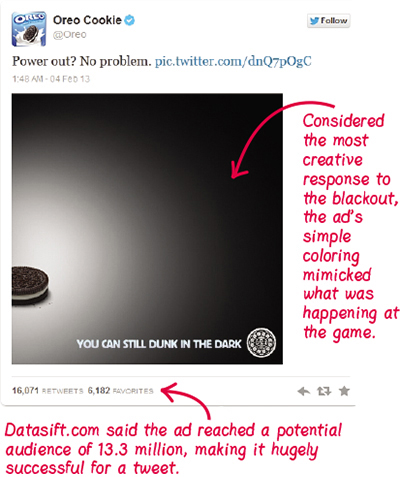12.6 Leading Decision Making
Small groups make tons of decisions—
It was a simple ad with a big impact. The 2013 NFL Super Bowl came to a screeching halt when the power went out in the New Orleans Superdome. As players, coaches, sportscasters, and fans were left idling for 34 agonizing minutes, the social media team for Oreo went to work. Seizing the opportunity to create a timely and relevant ad, the 15-
Small groups make a series of decisions at various points in their work together. Everything from deciding when the group should meet to choosing a caption for an ad is subject to decision making—the process of making choices among alternatives. Groups commonly rely on three methods for decision making: decision by authority, decision by majority, and decision by consensus.
The quick decisions made by the marketing team at Nabisco allowed the company to capitalize on an “at the moment” event during the Super Bowl XLVII blackout.
